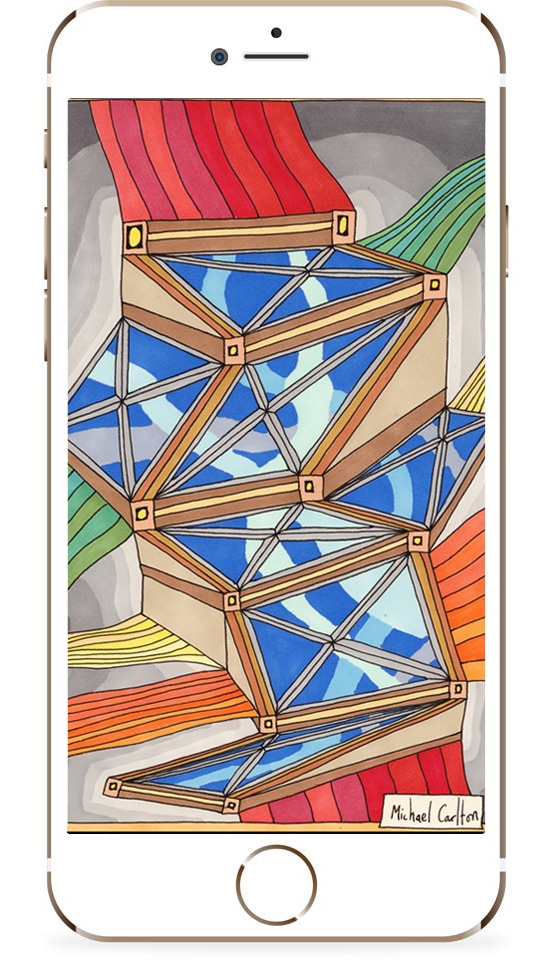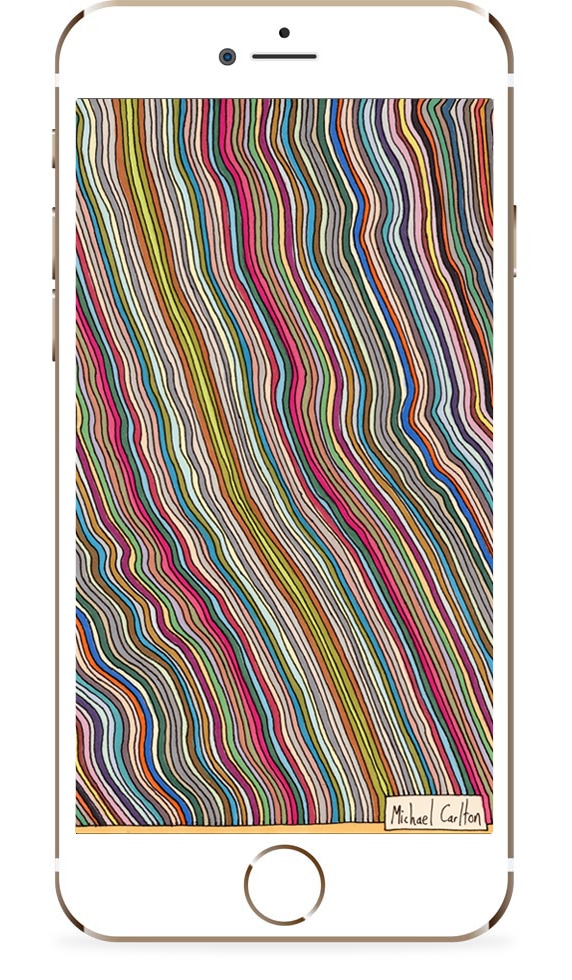Phase 3: Composition and First Few Shapes
The restaurant itself has quite a lot of square and rectangular shapes in it from all the ovens, cupboards, display screens and pizza boxes so I want to create something along those lines to complement these shapes.
To do this I'm going to create a Piet Mondrian-esque painting with a bright and bold colour scheme:
The reference lines will be based around the logo and lettering on the front window:
This creates a dual-viewing effect where the painting looks and feels slightly different when viewed from one angle and position on the inside and another from the outside.
Now I just need to paint the first few colours the starting point for the rest of the colour scheme:
Like the black lines before this orange line links the window logo into the composition of the painting and frames the counter against the edge of the painting.
The orange stripe intersects the orange line of the logo at a 90 degree angle when viewed from outside and sets the painting up for the perpendicular shapes that will follow.
The orange stripe down the middle is prominent when looking in from outside so within the abstract context of the painting it suggests both "inside" and "outside" and acts as a pivital point between in and out, left and right etc.
Michael Carlton Art Newsletter
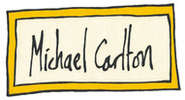
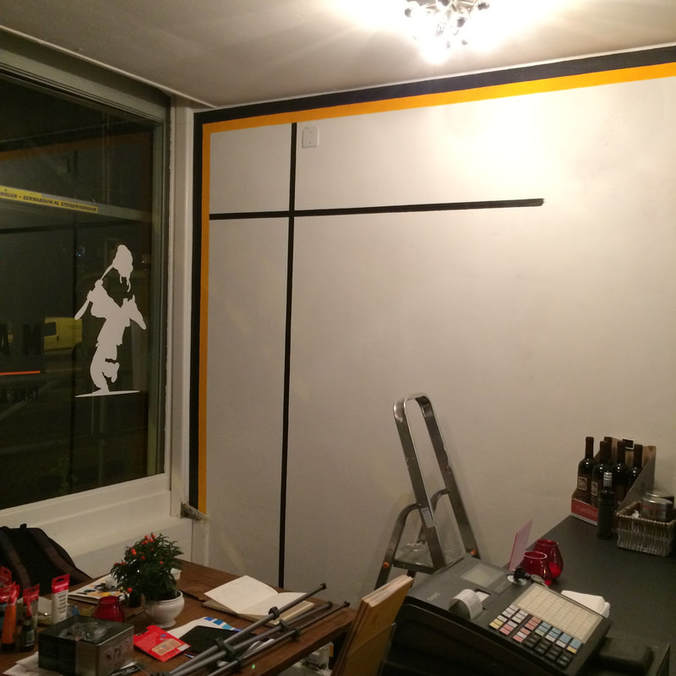
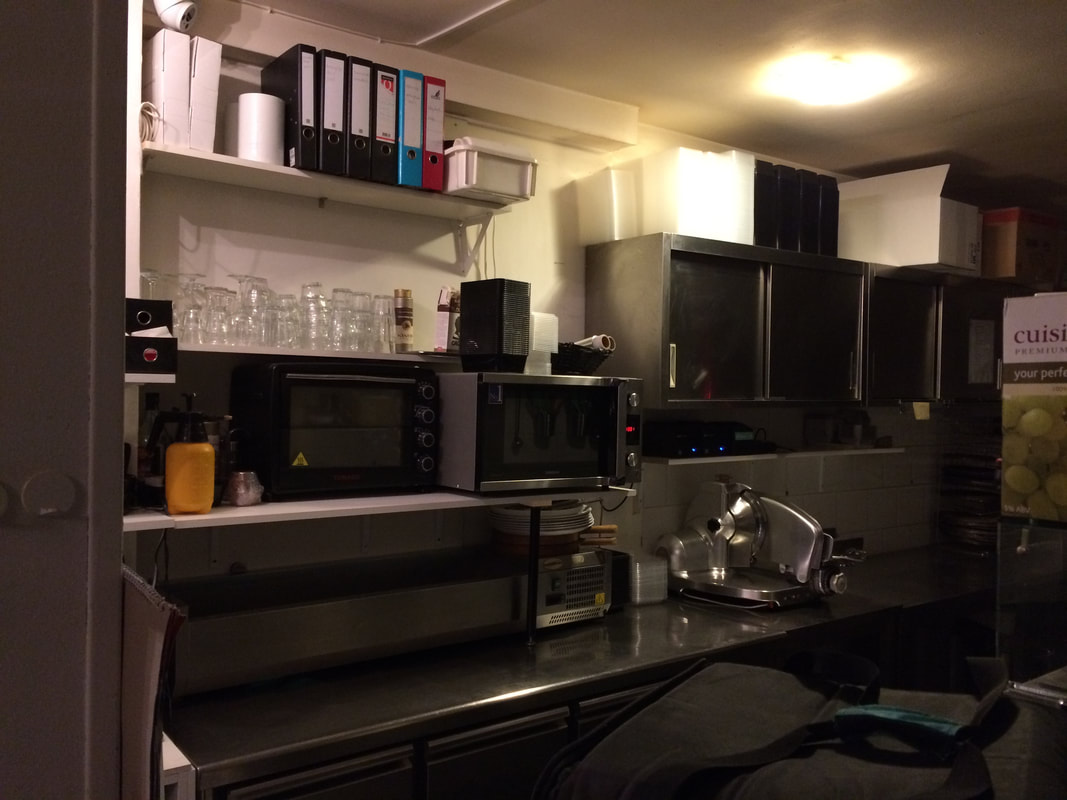
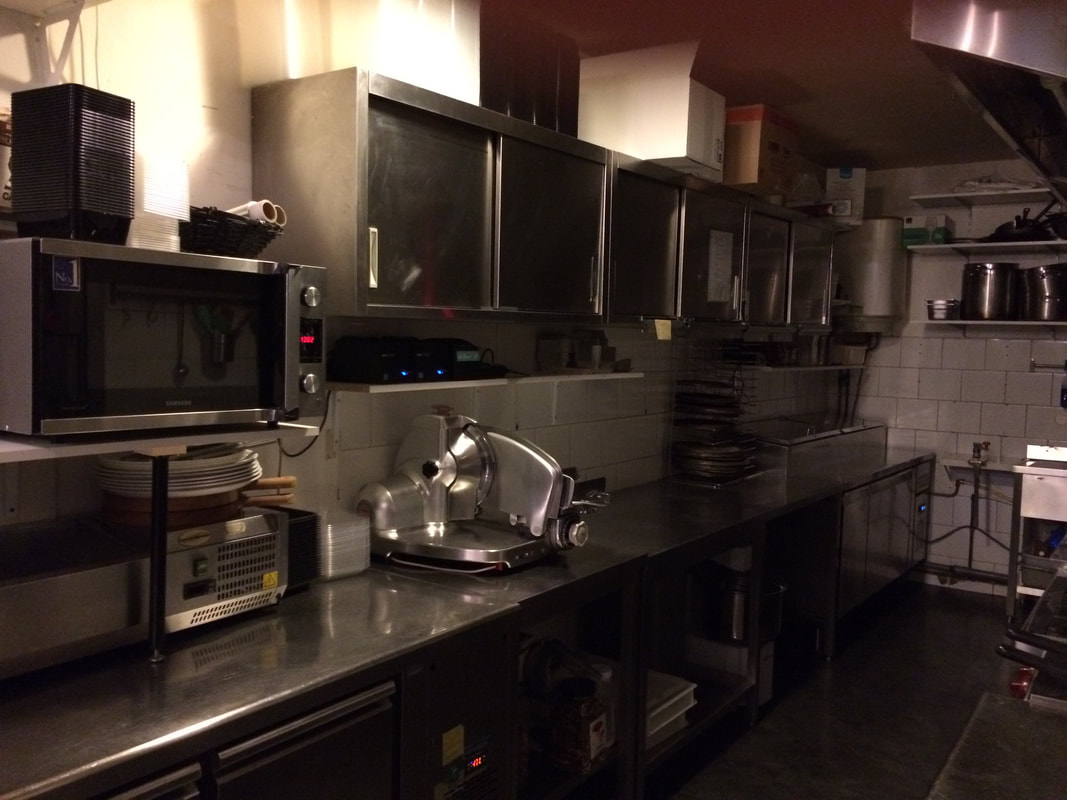
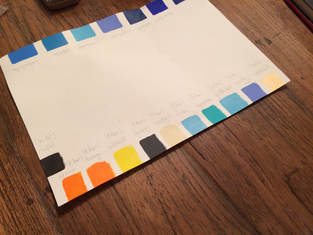
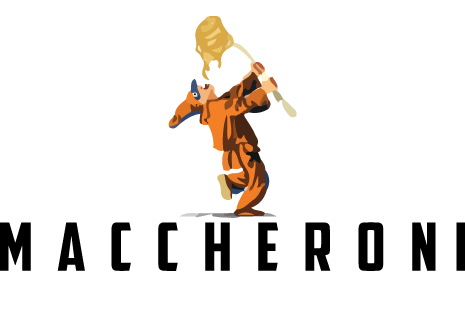
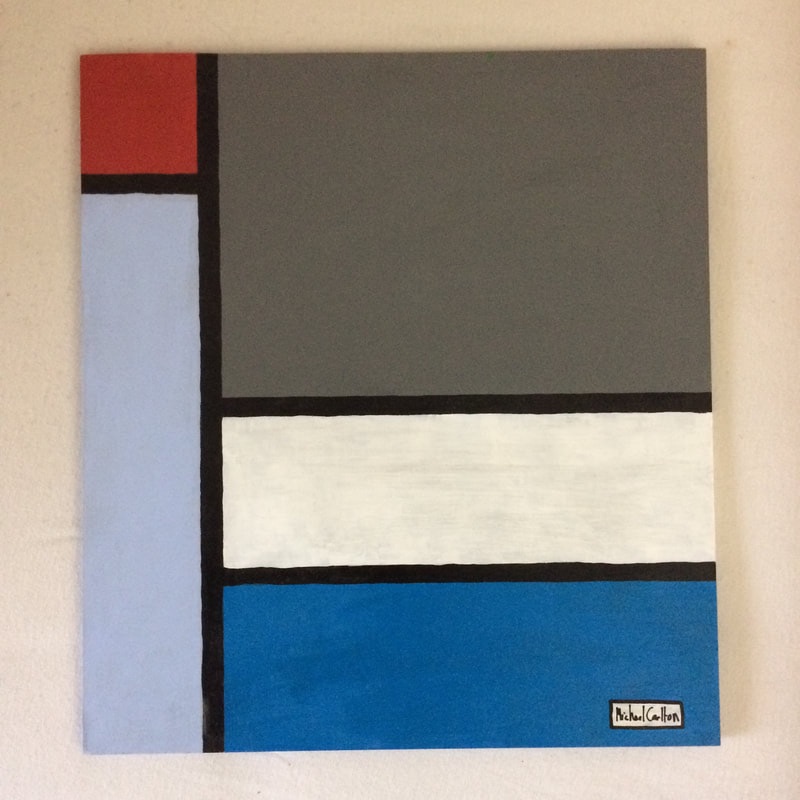
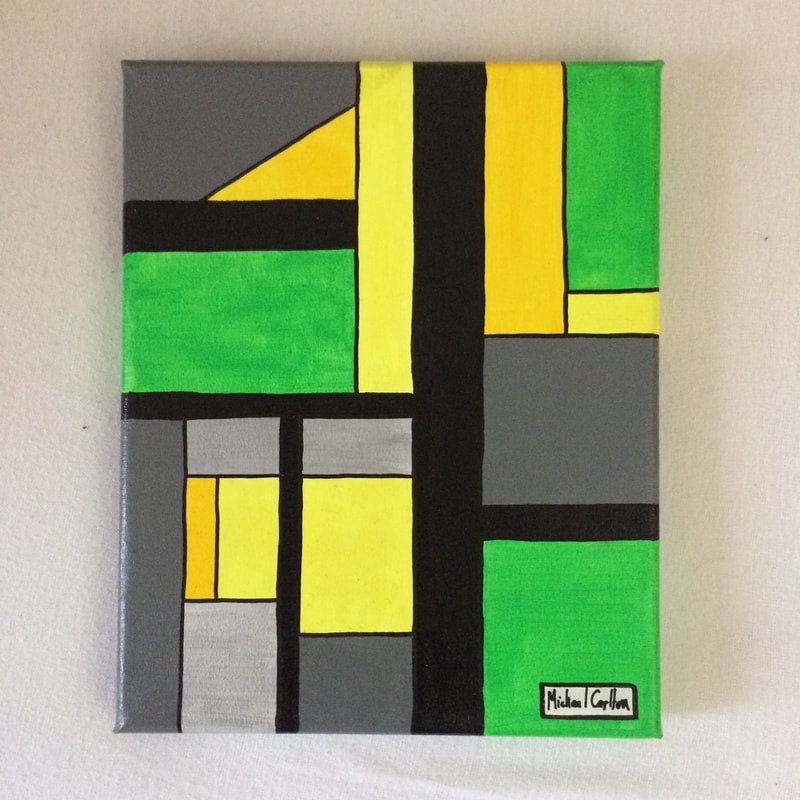
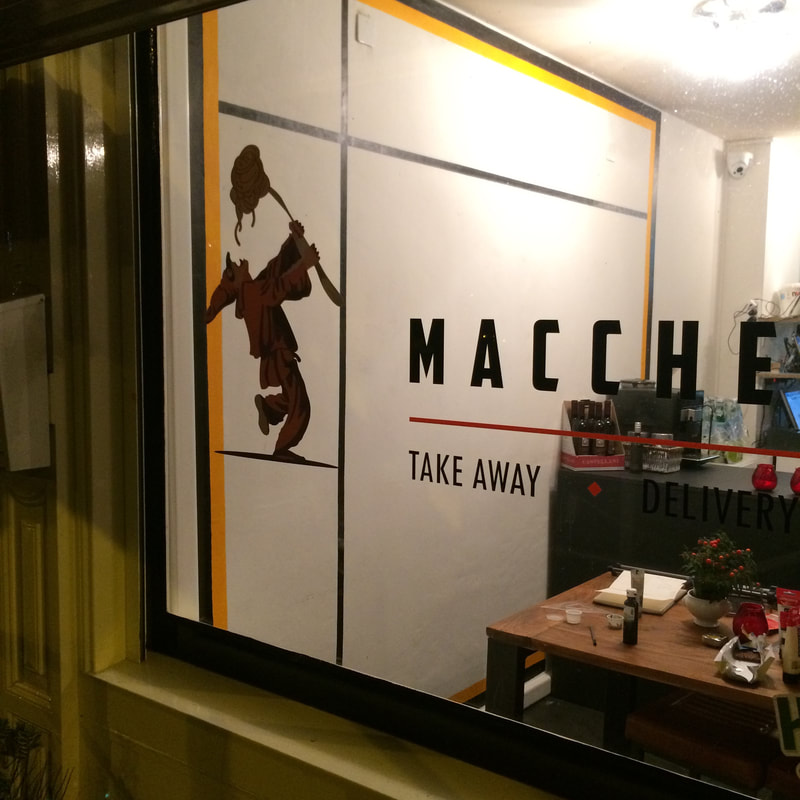
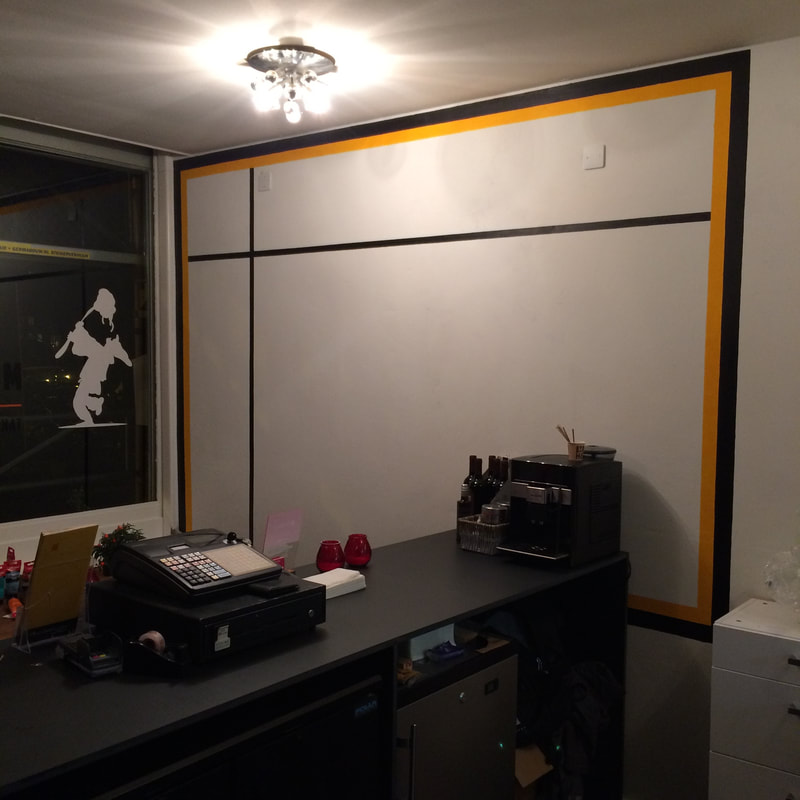

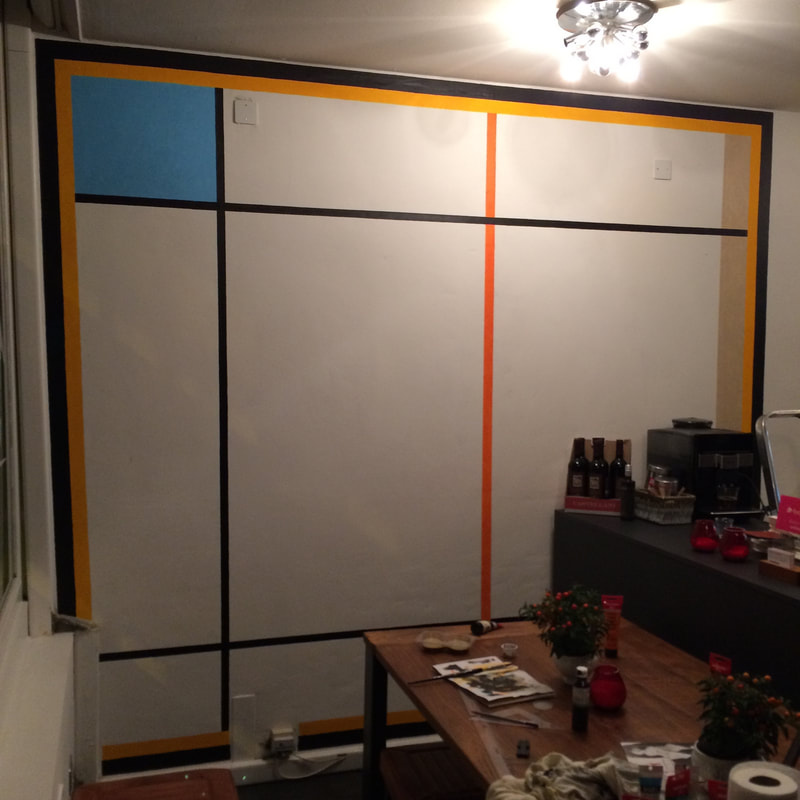
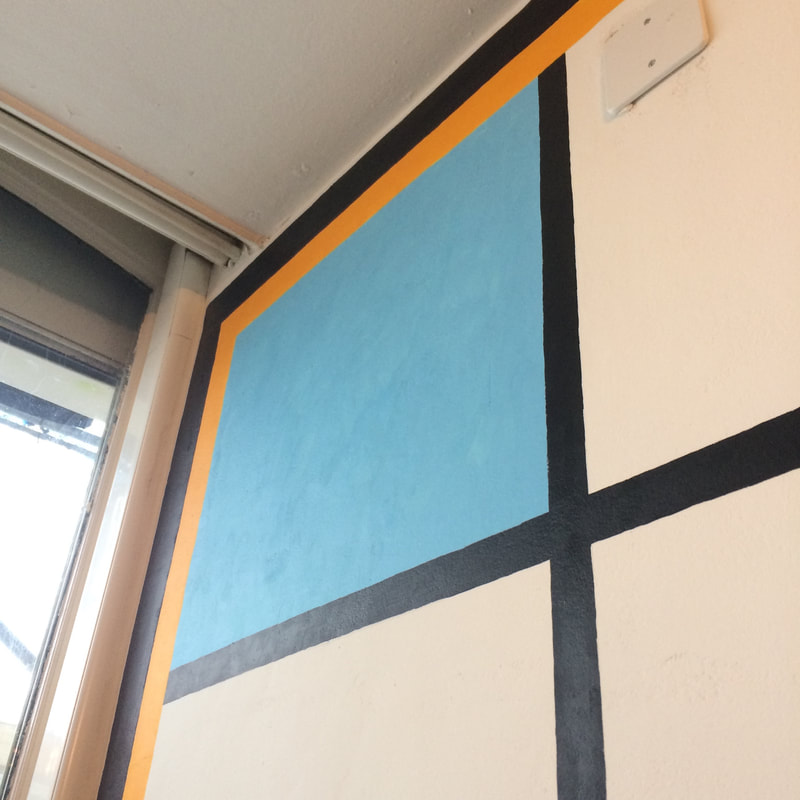
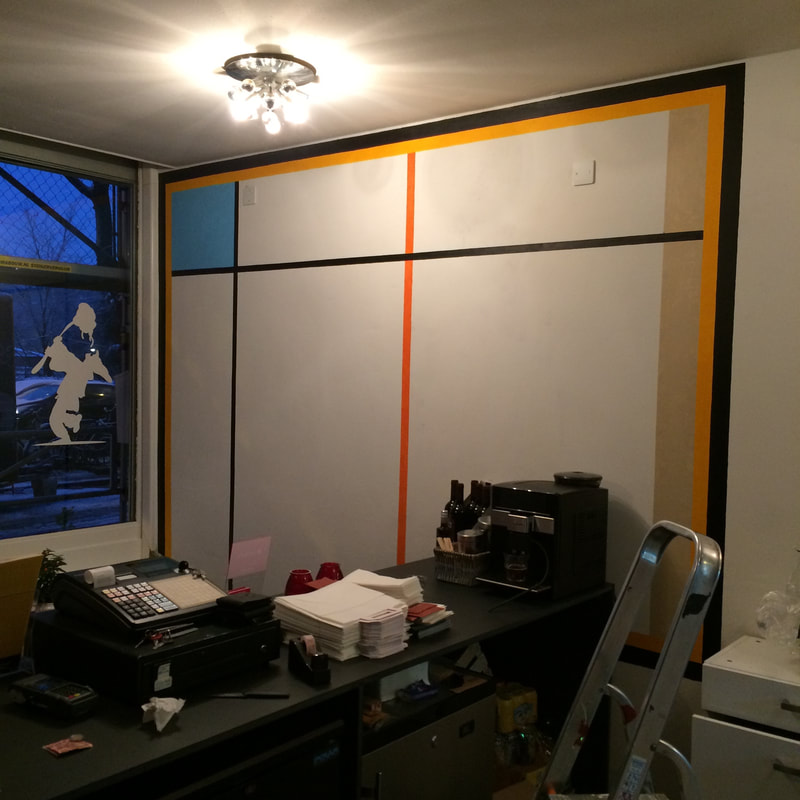

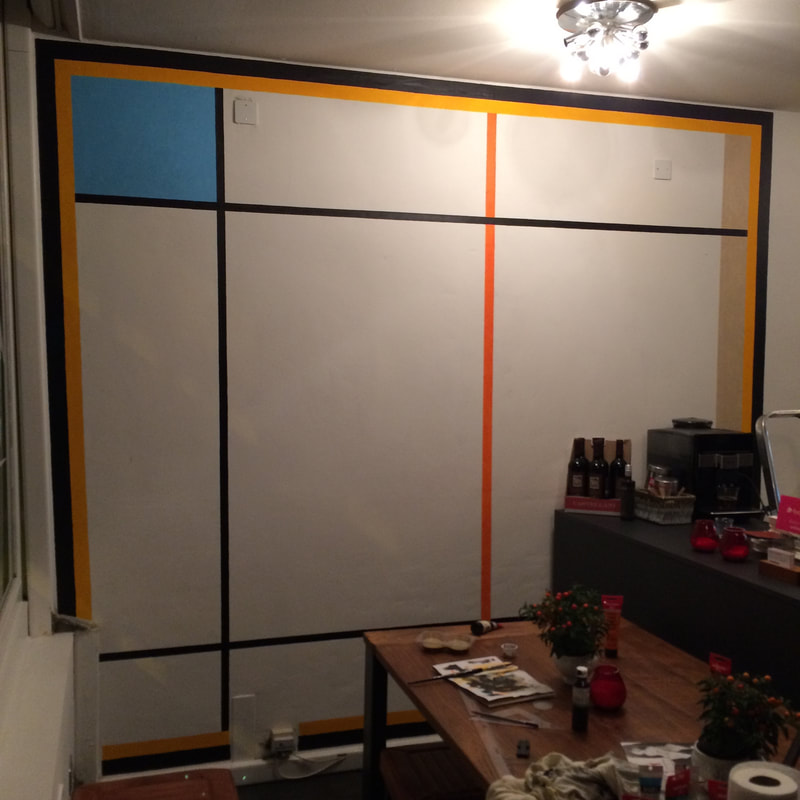
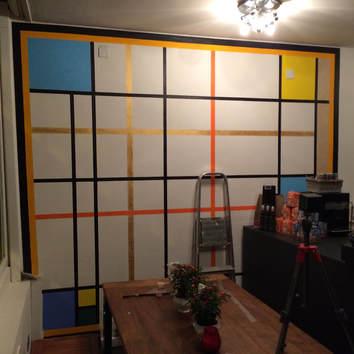
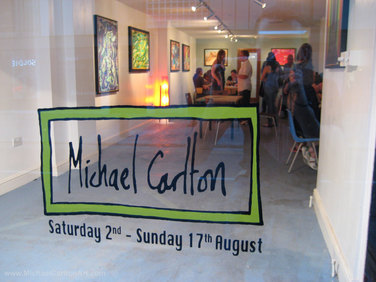

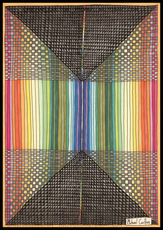
 RSS Feed
RSS Feed
